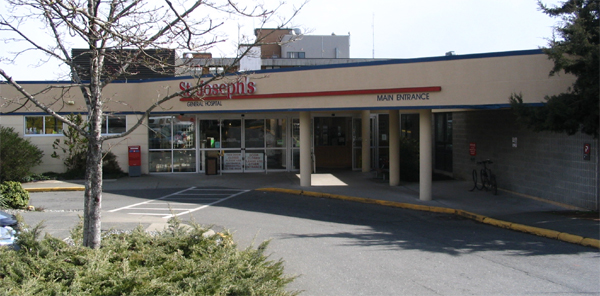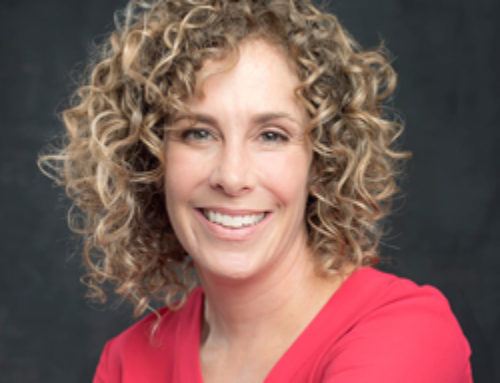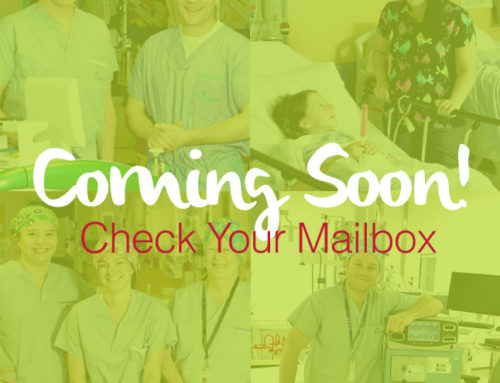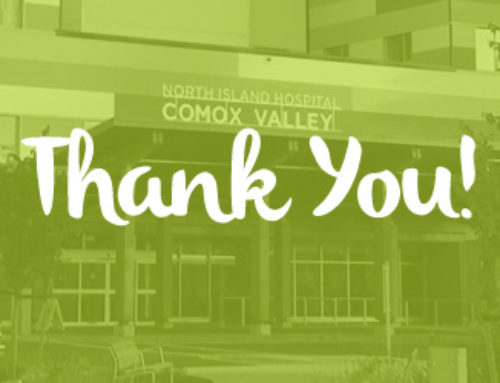
While there is considerable and understandable excitement in the community over the construction of a new hospital for the Comox Valley, there remain a number of vital points for residents to bear in mind for the foreseeable future.
A site has been chosen for a new hospital and planning is now underway, however, St. Joseph’s still has at least five years to maintain its current services. Along with those services, there is a need to continue to enhance, and update equipment as needed in order to meet the demands of our growing population It is also very important for citizens of the Comox Valley to understand that the new hospital will not be St. Joseph’s. When the new hospital is completed St. Joseph’s will continue to offer services to the public with new and different areas of emphasis to serve community needs in its own realm.
As it stands and from information available to date St. Joseph’s will be offering: complex care, hospice/palliative care, and primary care, as the most likely areas of specialty.
Complex care specifically refers to residential care of patients with health conditions that cannot be cared for at home but require skilled nursing care along with assistance in carrying out the activities of daily life such as bathing, eating, taking medications, toileting and dressing.
Primary care refers to any care not carried out in an acute hospital, such as the new one, and it is for ambulatory patients. This option can include clinics for specialty services such as wound care, chronic diseases like diabetes, Chronic Obstructive Pulmonary Disease (COPD), etc.
What this all means is support from members of the community will continue to be vitally important now more than ever. Such support, both moral and financial, will help sustain and enhance quality healthcare for you and all patients in the community.
Looking to demand, consider the following: last year St. Joseph’s delivered 636 babies, had 8,409 operating room cases, 1,408,542 diagnostic tests and 24,486 emergency room visits. Additional equipment and new technology is needed in all areas. A point to remember in this regard is that the government does not provide funding for all new or replacement equipment. That is why your support is vital. And any equipment purchased currently may also be transferable to the new hospital, which, in conjunction with St. Joseph’s will look to the health needs of the greater community.
The population of the area continues to burgeon. In 2010 the North Island had a population of 121,045 and is forecast to increase to 149,661 by 2030. The primary demographic for growth, meanwhile is in the age group 65-plus, so it is obvious that the new hospital combined with St. Joseph’s will be essential to serve the wider public in its needs. As an aside, when St. Joseph’s opened its doors to patient care in 1913 it served a population of some 2,000.
In the interim St. Joseph’s will continue to address the growing need for medical care in all departments. Community support is far reaching and simply put this cannot be done without your help. In that regard you are invited to help the hospital and the Foundation keep pace with the community’s ever-growing healthcare needs. Each year the Foundation receives a wish list from the hospital with an astounding $1 million in equipment needs to help meet the most urgent requirements for the forthcoming year. With your help we can purchase some of the equipment needed for the Hospital.
A one time annual donation of any amount would make a significant difference to meet this need. Or you may wish to consider monthly giving. It is easy and convenient. Just state how much you would like to give each month and the Foundation will take care of the rest. Those who donate will receive one consolidated tax receipt each February to cover all monthly gifts. Furthermore, you can change, hold or cancel your donations any time by just giving a call.
Thank you for supporting St. Joseph’s General Hospital Foundation. Your support will help the many patients young and old that come to St. Joseph’s each day for care.






Leave A Comment